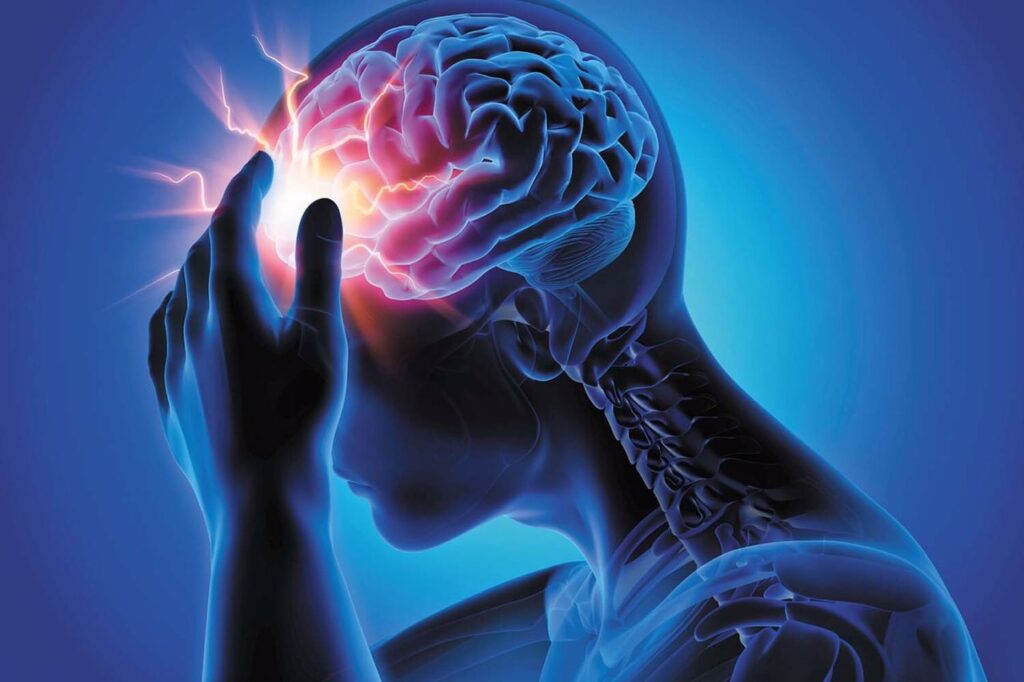Dr. Ikenna Onwuekwe, a distinguished Professor of Internal Medicine and Neurology at the University of Nigeria, Nsukka, has recently issued a crucial call to individuals over the age of 40 who experience constant headaches.
He strongly emphasizes the importance of seeking medical intervention, citing that the emergence of headaches around this age could potentially signal serious underlying health issues, including vascular diseases or tumours.
Understanding the implications of chronic headaches is vital, as they can serve as either benign inconveniences or indicators of more significant health concerns.
Dr. Onwuekwe highlights that irrespective of age, anyone suffering from persistent headaches should prioritize consultations with qualified medical professionals.
This proactive approach is crucial for early diagnosis and treatment of potential health problems.
Headaches, defined as pain within and around the skull, can affect various structures including the face, throat, ears, eyes, and neck.
Although headaches are common and often trivialized, Dr Onwuekwe stresses that recurring headaches are not to be ignored, particularly as they may signify the presence of a tumour or other critical medical conditions.
“The brain itself is insensitive to pain,” Dr. Onwuekwe explains. “However, various surrounding structures such as arteries, veins, and muscles are susceptible to injury.
These injuries create the sensation of headache, resulting in discomfort or pain that many people experience.”
Globally, headaches are recognized as the most prevalent neurological disorder encountered in medical clinics.
The International Headache Society acknowledges over 250 different types of headaches classified under the International Classification of Headache Disorders.
These types are primarily categorized into two groups: primary headaches, which include migraines, tension-type headaches, and cluster headaches, and secondary headaches, which are linked to identifiable causes such as uncontrolled hypertension, strokes, and infections.
Staggering statistics indicate that headaches affect approximately 42% to 56% of the global population annually, impacting around three billion individuals worldwide.
Dr. Onwuekwe notes that primary headaches are generally characterized by their lack of identifiable causes, while secondary headaches derive from more serious, identifiable organic issues.
The PUNCH Healthwise in its report stated that Dr. Onwuekwe elaborates on various identifying factors that may distinguish benign headaches from those requiring immediate medical attention.
He emphasizes the importance of being aware of specific features, encapsulated in the acronym “SNOOP”:- “S” Systemic symptoms or signs indicating an overall health issue, such as fever, weight loss, history of cancer, or reduced immunity.- “N”: Neurologic symptoms that accompany headaches, including confusion, weakness in limbs or facial muscles, or visual disturbances, necessitating a thorough medical review.- “O”: Headaches that occur suddenly or wake a person from sleep, particularly if identified as “the worst headache” experienced or worsened by coughing or bending.- “Second O”: The onset of headaches after the age of 40, which could indicate serious conditions like vascular diseases or tumours.- “P”: Changes in headache patterns, where headaches may become new and different, with alterations in frequency or intensity.
Dr. Onwuekwe acknowledges that tension-type headaches are the most frequently experienced, while migraines rank second, affecting a higher proportion of females.
He shares insights from his research in Enugu, Nigeria, which demonstrates that headaches pose a significant health challenge in the region.
In his findings, a 38.3% prevalence of headaches was noted among the general community, while a staggering 88.3% prevalence was observed among medical students in Enugu.
These figures highlight the influence of factors such as age, occupation, and cultural contexts on headache prevalence.
When it comes to managing headache symptoms, many Nigerians tend to rely on common remedies such as rest, adequate sleep, and the use of over-the-counter analgesics like paracetamol.
For many, these options are effective. However, in cases where these measures fall short, Dr. Onwuekwe notes that individuals often turn to herbal remedies or even spiritual healers before seeking expert medical help.
Critical underlying causes of chronic headaches, such as strokes and brain tumours, can lead to significant disability or even mortality.
However, Dr. Onwuekwe remains optimistic, pointing out that with early detection and proper management, the negative consequences of these conditions can be mitigated.
Furthermore, Dr. Onwuekwe urges individuals experiencing chronic headaches to remain vigilant concerning their symptoms.
“It’s essential to observe the characteristics and manifestations of headaches, especially using the SNOOP principle,” he advises, underscoring the adage, “A stitch in time saves nine.”
This vigilance could prove life-saving and significantly improve the quality of life.
Reported by: Ifedamola Fayomi



